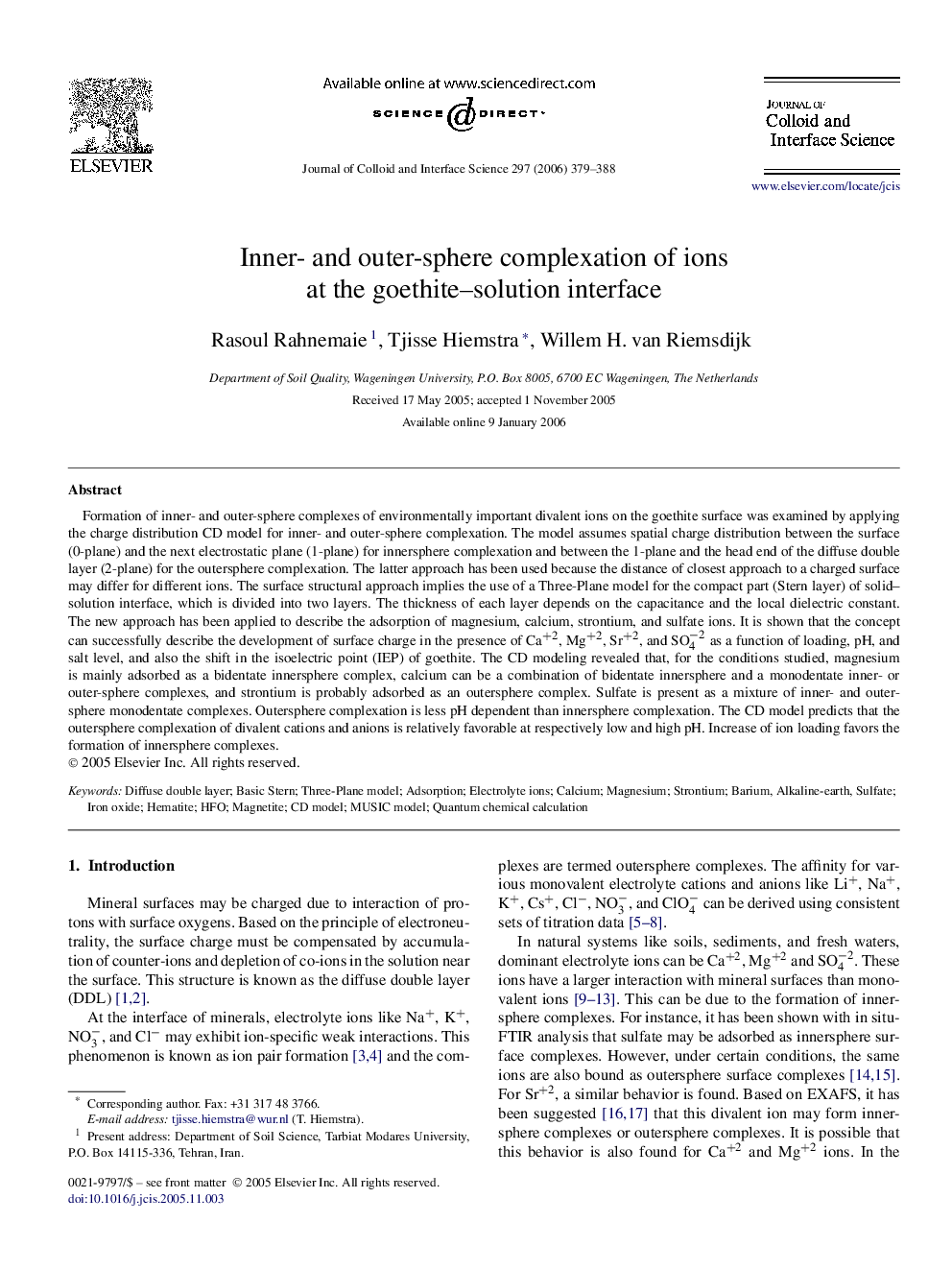| Article ID | Journal | Published Year | Pages | File Type |
|---|---|---|---|---|
| 613204 | Journal of Colloid and Interface Science | 2006 | 10 Pages |
Formation of inner- and outer-sphere complexes of environmentally important divalent ions on the goethite surface was examined by applying the charge distribution CD model for inner- and outer-sphere complexation. The model assumes spatial charge distribution between the surface (0-plane) and the next electrostatic plane (1-plane) for innersphere complexation and between the 1-plane and the head end of the diffuse double layer (2-plane) for the outersphere complexation. The latter approach has been used because the distance of closest approach to a charged surface may differ for different ions. The surface structural approach implies the use of a Three-Plane model for the compact part (Stern layer) of solid–solution interface, which is divided into two layers. The thickness of each layer depends on the capacitance and the local dielectric constant. The new approach has been applied to describe the adsorption of magnesium, calcium, strontium, and sulfate ions. It is shown that the concept can successfully describe the development of surface charge in the presence of Ca+2, Mg+2, Sr+2, and SO−24 as a function of loading, pH, and salt level, and also the shift in the isoelectric point (IEP) of goethite. The CD modeling revealed that, for the conditions studied, magnesium is mainly adsorbed as a bidentate innersphere complex, calcium can be a combination of bidentate innersphere and a monodentate inner- or outer-sphere complexes, and strontium is probably adsorbed as an outersphere complex. Sulfate is present as a mixture of inner- and outer-sphere monodentate complexes. Outersphere complexation is less pH dependent than innersphere complexation. The CD model predicts that the outersphere complexation of divalent cations and anions is relatively favorable at respectively low and high pH. Increase of ion loading favors the formation of innersphere complexes.
Graphical abstractFigure optionsDownload full-size imageDownload as PowerPoint slide
